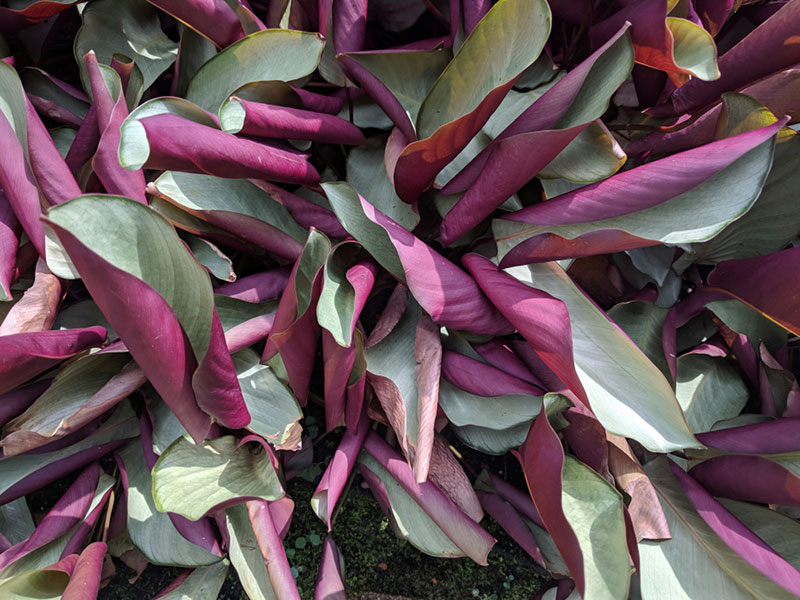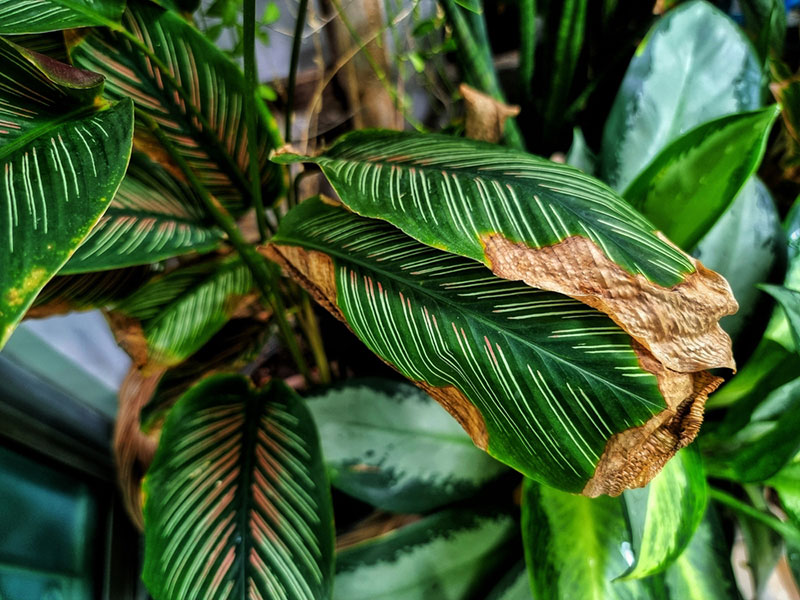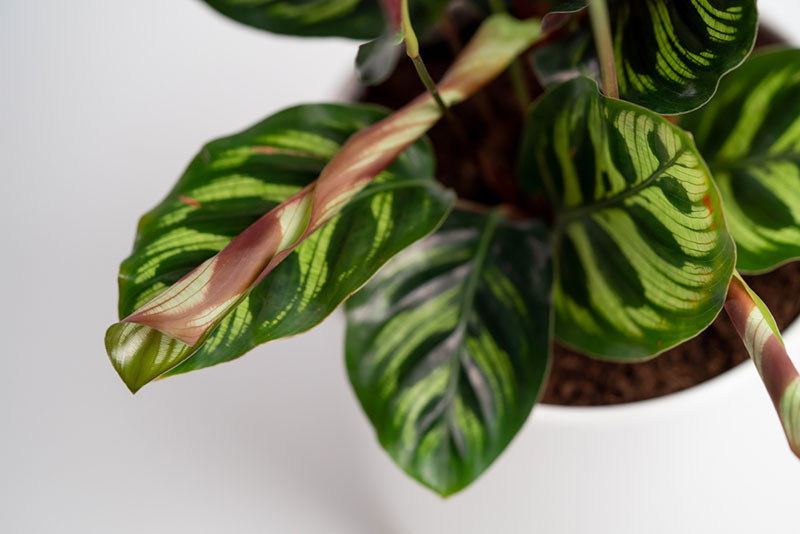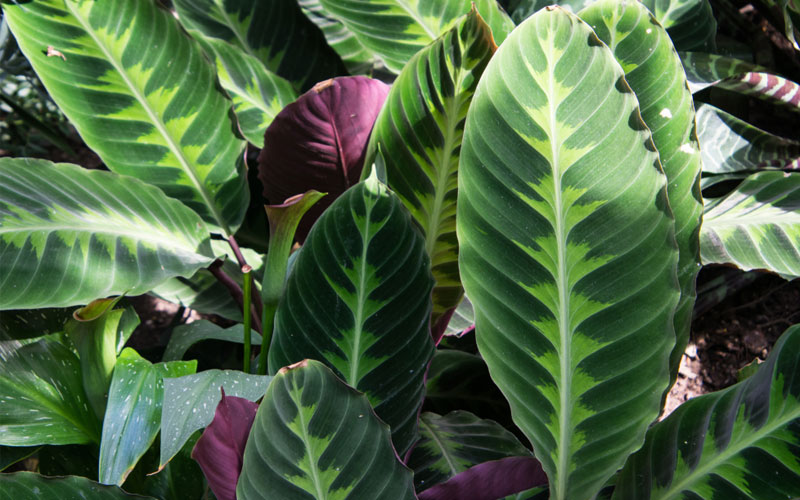Calathea plants have vibrant leaves that come in various green, yellow, rose, white, and olive tones. The shapes and sizes of this indoor foliage will vary from a small tabletop plant to a large specimen that you can have on the floor in a large pot to accent a room.

However, when the leaves start curling, there’s an underlying problem you need to address.
Why Are the Leaves Curling on My Calathea Plant?
Plants will often tell you if something is wrong if you know what to look for. For example, one of the many symptoms of an issue is curling leaves. Typically, a plant will curl its leaves when it wants to protect itself.
If you suddenly notice your Calathea plant’s leaves are curling, it could be due to one or several of these elements:
- Under watering
- Quality of the water
- Not enough humidity
- Temperature fluctuations
- Too much sunlight
Underwatering
One of the biggest reasons for Calathea leaves suddenly curling is due to underwatering. Your plant is trying to conserve water by curling the leaves inside and retain any available moisture. Calathea plants love to sit in moist soil conditions where they will thrive.
Ensure that you’re following a consistent watering schedule without letting the soil dry out between waterings.
The top two to three inches of soil should remain moist, and there should be proper water drainage for the roots. Your plant shouldn’t be sitting and soaking in damp soil, or it can result in root rot.

Quality of the Water
If your Calathea plant has adequate water, but you’re still facing curling leaves, the quality of your water could be to blame. If you are using tap water for your plants, it could contain several additives affecting your vegetation.
Foreign things like chlorine, salt, fluoride, and other minerals can cause leaves to curl. Try switching from tap water and use only distilled water for your Calathea. This change of water ensures that you are not exposing your plant to unnecessary additives which can cause curling leaves.
Not Enough Humidity
Calatheas love higher humidity areas, and if they are in an environment that is too dry, you will notice their leaves curling. However, if you live in a dry climate, you can still enjoy this houseplant by making minor adjustments for their health.
Providing additional humidity for a Calathea plant can be quickly done through a pebble tray, regular misting for its leaves, or by introducing a humidifier to the room.

Temperature Fluctuations
Because Calatheas are tropical plants, they prefer warm, humid environments. Therefore, if your plant becomes exposed to drastic temperature changes or becomes cold, the leaves will begin to curl.
Remember that your plant is trying to protect itself, so if it’s in an area with drafts or cold breezes, it should be relocated to an alternative spot.
By providing a space that is free from drastic temperature fluctuations, you will notice the leaves beginning to uncurl and look vibrant once again.
Too Much Sunlight
Self-preservation is what your Calathea plant might be doing if it’s curling the leaves. If you have already checked the soil and humidity levels and it has a stable temperate environment, it could be getting too much sunlight.
Too much direct sunlight can cause damage to the Calathea leaves, so they will naturally curl to protect themselves. They love the light, but there is too much of a good thing.
If your plant sits in a window with direct sunlight for long hours during the day, try relocating it to another spot in the room. You may notice after moving your Calathea that the leaves will begin to uncurl.
The Scoop on Curling Leaves With Calathea Plants
If you suddenly notice that your Calathea plant has curling leaves, there can be several reasons why it’s happening. Thankfully, Calatheas are not challenging to take care of, but they can be finicky if their environment is unsuitable.
Curling leaves tell you that your plant is trying to protect itself, so you must try to determine the cause as soon as possible. Swift action will help your Calathea plant rebound and look healthy once again.





